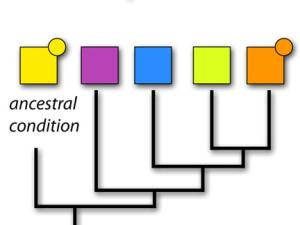

Research Bio
Current research in Marvalee Wake's laboratory emphasizes morphology, development, and reproductive biology in vertebrates with the goal of understanding evolutionary patterns and processes. The comparative method in a phylogenetic context is applied to ontogenetic and adult studies of various organ systems and their integration in fishes, amphibians, and reptiles. They are particularly interested in examining patterns of early development in order to understand and assess homology and homoplasy. They employ a diversity of techniques, including electromyography, immunohistochemistry, electron microscopy, and many others.
Comparative and developmental osteology and neuroanatomy are receiving considerable attention, as is the evolution of viviparity. They are interested in many problems in evolutionary, developmental, and functional morphology. They currently are working on such problems as the molecular systematics of caecilian amphibians, aspects of the evolution of live-bearing modes of reproduction in amphibians and fishes, and mechanisms of the origin of homoplasies (convergent evolution). They are also involved in developing the application of the comparative method to issues of the understanding and preservation of biodiversity.
Research Expertise and Interest
development, evolution, systematics, amphibians, reproductive biology, vertebrate evolutionary morphology, fishes, reptiles, comparative analysis, biodiversity issues
In the News
Homoplasy: When look-alikes are unrelated
Nature is replete with animals and plants that have similar shapes or behaviors but are unrelated. They evolved these characteristics, such as long bodies in salamanders, independently, often through alteration of an entirely different set of genes. This process, called homoplasy, can tell us a lot about how evolution works, UC Berkeley biologists argue.

